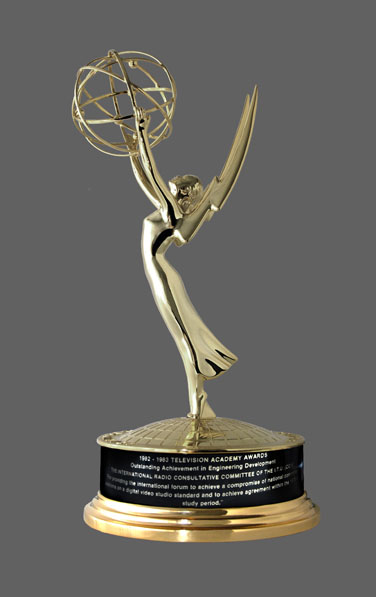 Family watching television in the 1950s (Source: Evert F. Baumgardner, public domain via Wikimedia Commons) Family watching television in the 1950s (Source: Evert F. Baumgardner, public domain via Wikimedia Commons) |
Regular, low-resolution, television broadcasts began in the late 1920s, with improvements in the early 1930s. But it was after World War II that the new medium began to take off. ITU’s first technical standards for television were released in 1949. In the following decades, more than 150 technical standards were published to make it possible for high-quality images to be delivered across the world. ITU standards now cover all kinds of sound and vision broadcasting, including today’s multimedia and data transmissions to a plethora of devices.
 The Emmy awarded to CCIR in 1983 for outstanding achievement in Engineering Development
The Emmy awarded to CCIR in 1983 for outstanding achievement in Engineering Development |
ITU’s important role in setting the foundations for international broadcasting was recognized by the US National Academy of Television Arts & Sciences (NATAS) in 1983, 2012, and 2023, which gave Emmy Awards to the Union. In 2008 and 2017, ITU received Primetime Emmy Awards from the Academy of Television Arts & Sciences (ATAS) in recognition of the video coding collaboration of ITU, ISO and IEC. Another result of ITU's pioneering standards collaboration with ISO and IEC was the JPEG partnership. In
2019, the engineering team responsible for the first edition of the JPEG image compression standard (ITU T.80-series) was honoured with an Engineering Emmy Award for its outstanding contribution to image coding.
